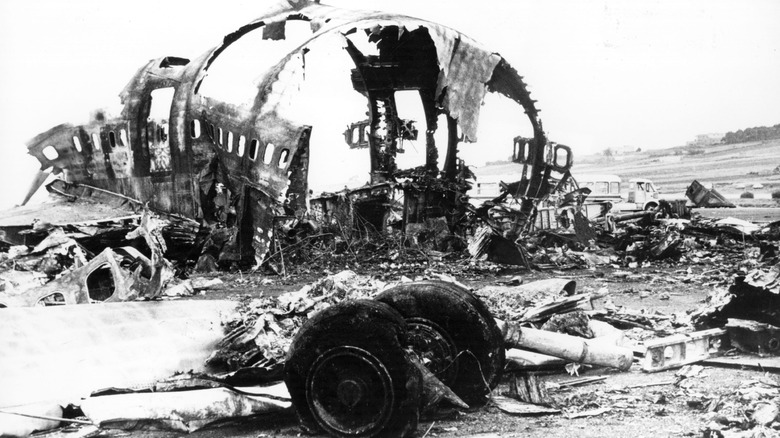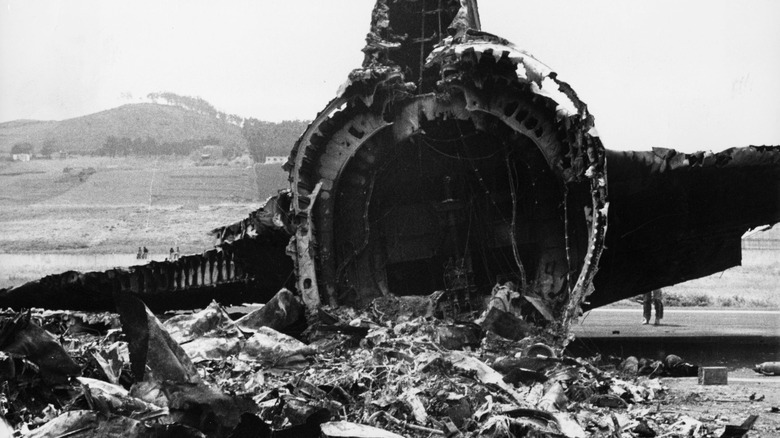The Truth About The Deadly Tenerife Airport Disaster
The Canary Islands have been a tropical vacation mainstay for decades, but on one tragic day in the 1970s, it was the site of the deadliest aircraft accident in history. On March 27, 1977, a Pan Am jumbo jet sat on the runway of Los Rodeos Airport preparing for a short flight to Las Palmas (via Historynet). Suddenly, the plane swerved off the runway to the shock and confusion of the passengers inside. The pilot's reasoning was soon made clear: another plane was bursting through the fog and attempting to take off from the airport's only runway, coming in the opposite direction.
The two planes collided with devastating effect. 583 people lost their lives and dozens were injured in the collection, the deadliest in aviation history barring the thousands who died from the collateral damage from 9/11. Blame was initially placed on Jacob van Zanten, captain of the KLM 4805 that crashed into Pan Am 1736, but in reality, a handful of cruel coincidences, errors, and even an unrelated terrorist attack led to one of the most tragic accidents in human history.
A terrorist attack an a different airport led to the crash
In a cruel, ironic twist, neither of the planes involved in the disaster was even supposed to be on Tenerife. According to Simple Flying, a terrorist group had detonated a bomb at the Gran Canaria airport in Las Palmas, causing several injuries and temporarily shutting the airport down. Flights in the Canaries were redirected to Tenerife's Los Rodeos until police could confirm there were no more bombs at Gran Canaria. Recordings recovered from the plane's cockpit, which Pan Am captain Victor Grubbs had opened to bored passengers, reveal that he was ordered to land despite having enough fuel onboard to stay in a holding pattern above Las Palmas, which would have avoided disaster.
Captain van Zanten decided to refuel the jet while waiting for Gran Canaria to reopen, a sensible move that had terrible repercussions. The stationary jumbo jet held up the other 747, the Pan Am flight, behind KLM. As visibility deteriorated, the pilots were given instructions on how to take off, but confusion arose over whether they were told to take the first or third taxi exit. Eventually, the instructions were changed for KLM, but a buzz on the radio meant they couldn't hear Pan Am declare they were still on the runway. More tragically, when van Zanten was told to "standby for takeoff," he only heard "takeoff." He did what he was thought he was told, and the two 747s collided on the runway, claiming the lives of hundreds over some miscommunication and terribly timed radio interference.

